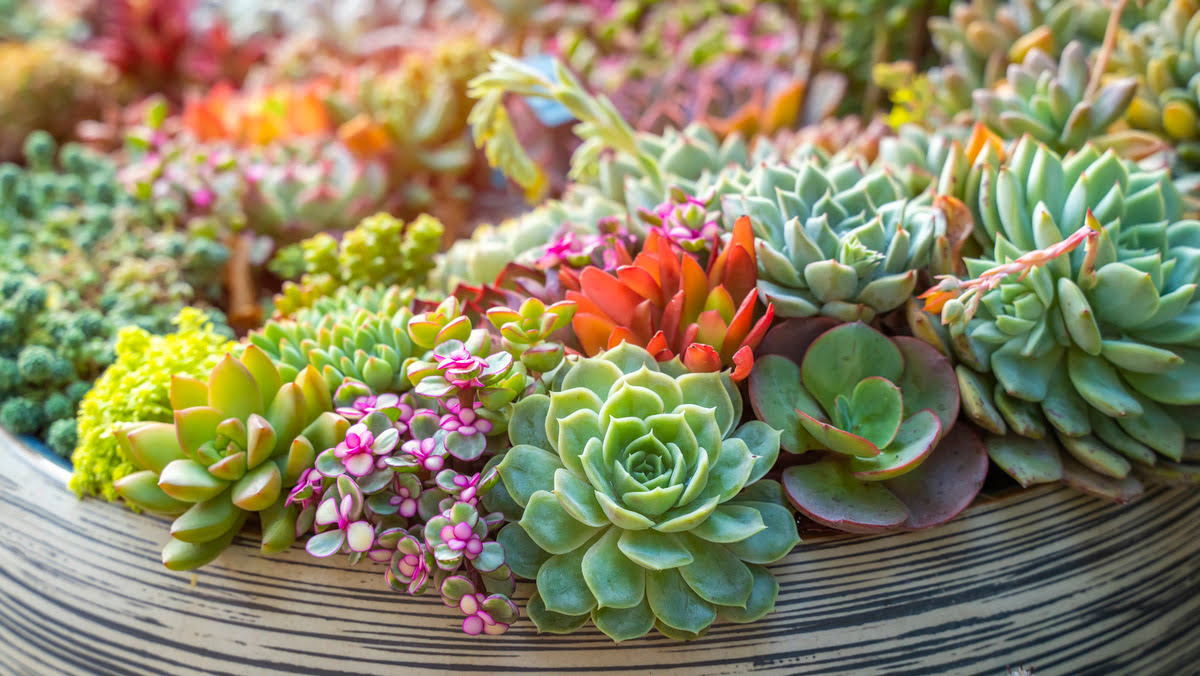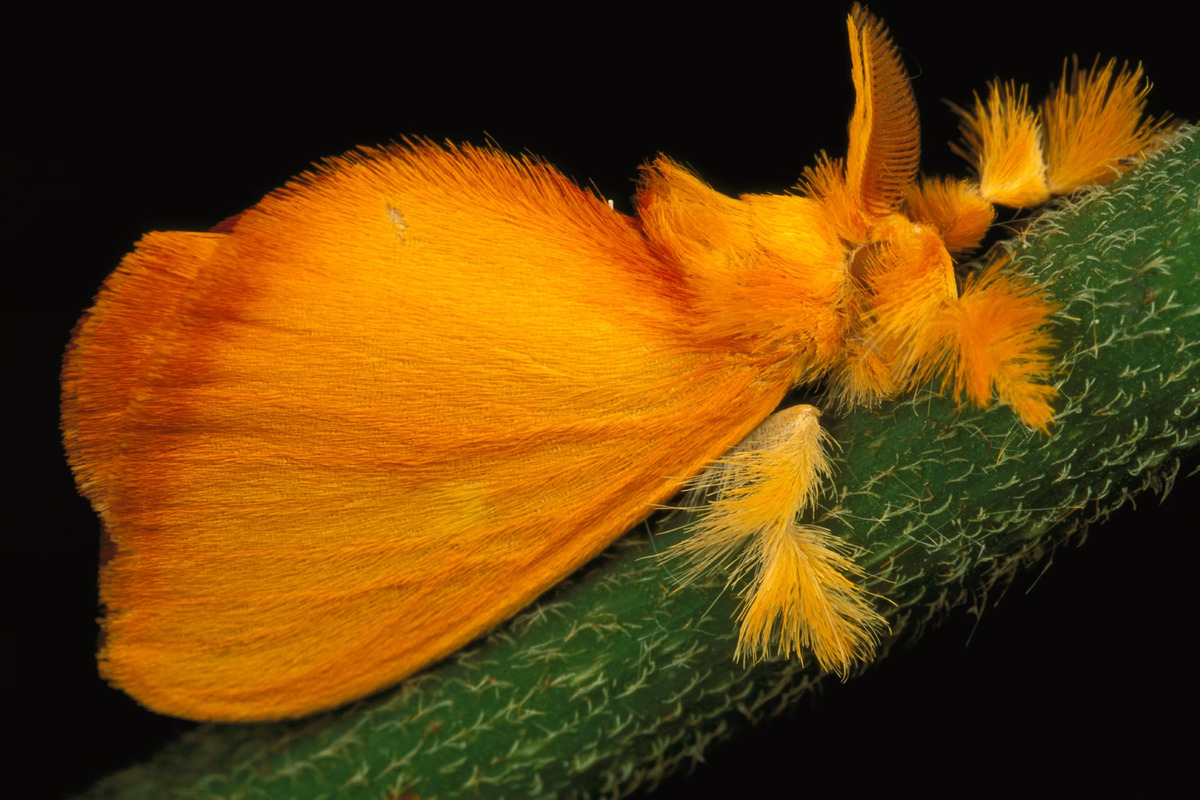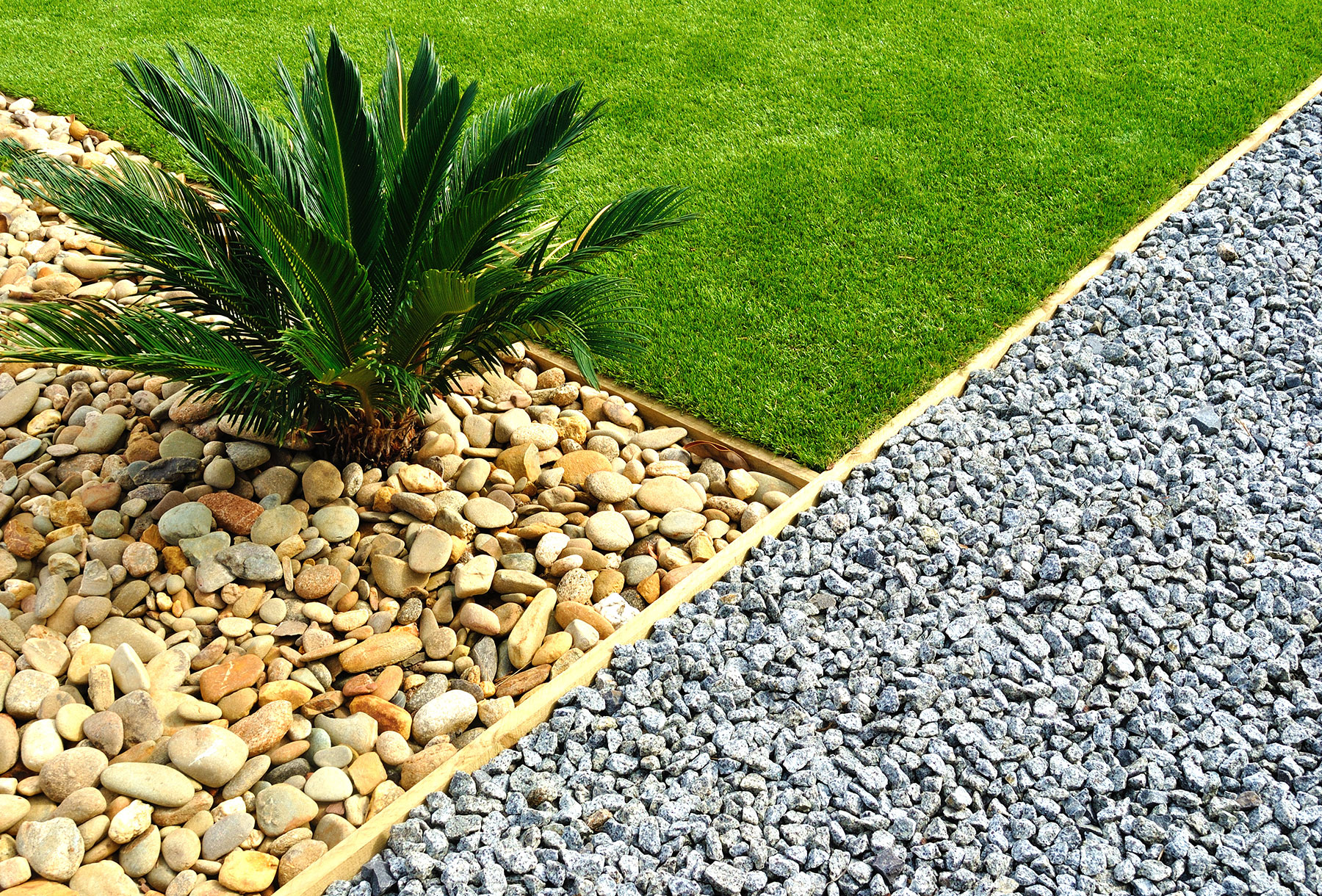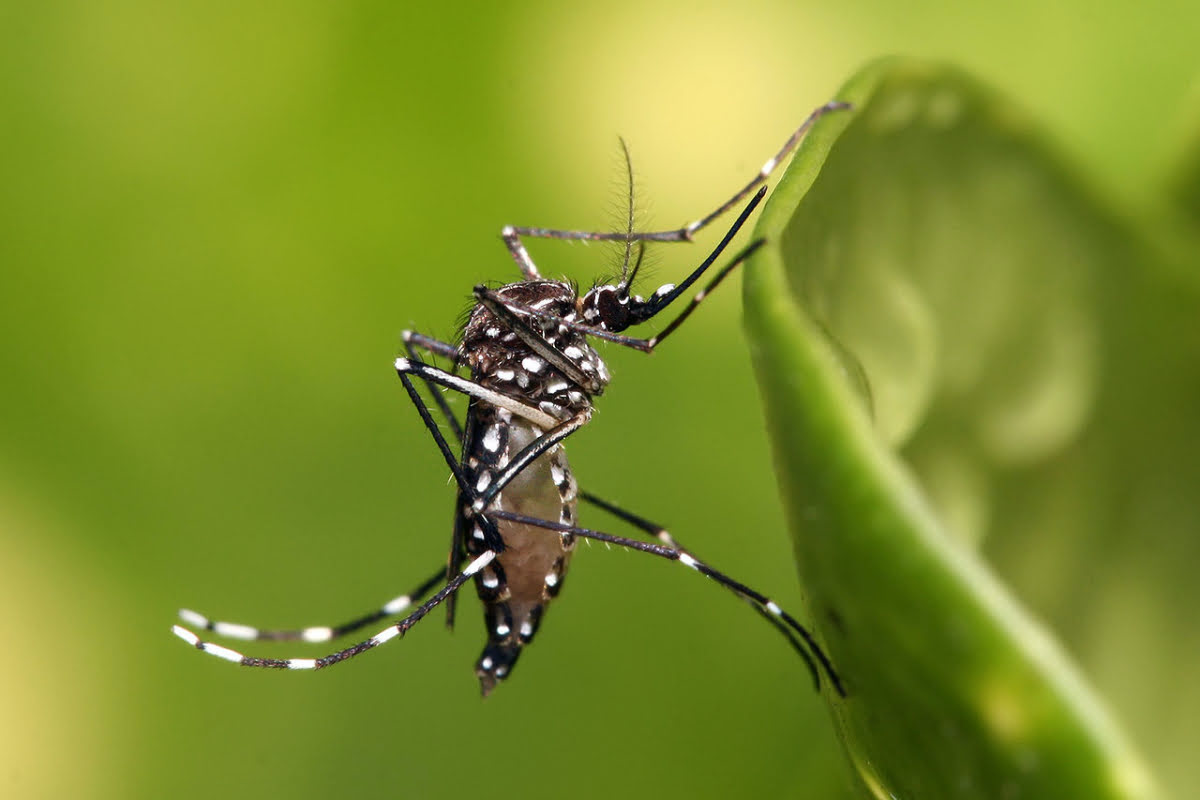Home>Types of Gardening>Ornamental Gardening>How To Make Succulents More Colorful


Ornamental Gardening
How To Make Succulents More Colorful
Published: December 26, 2023
Discover expert tips for enhancing the colors of your succulents with ornamental gardening techniques. Learn how to make your succulents more vibrant and eye-catching.
(Many of the links in this article redirect to a specific reviewed product. Your purchase of these products through affiliate links helps to generate commission for Chicagolandgardening.com, at no extra cost. Learn more)
Table of Contents
Introduction
Welcome to the vibrant world of succulents! These fascinating plants have captured the hearts of ornamental gardening enthusiasts with their diverse colors, shapes, and textures. If you're looking to add a pop of color to your garden or indoor space, succulents are an excellent choice. In this comprehensive guide, we will explore various techniques to enhance the natural hues of succulents, transforming them into stunning focal points in any setting.
Succulents are renowned for their ability to thrive in arid environments, thanks to their unique adaptation to store water in their leaves and stems. Their resilience and low-maintenance nature make them an ideal choice for both seasoned gardeners and beginners alike. However, beyond their practical benefits, succulents also offer a visual feast of colors, ranging from deep greens and blues to vibrant pinks, purples, and oranges. Understanding how to maximize and intensify these natural hues will elevate the visual appeal of your succulent collection.
In the following sections, we will delve into the art of enhancing succulent colors, covering essential topics such as selecting the right species for vibrant hues, optimizing sunlight exposure, implementing proper soil and watering techniques, utilizing fertilizers and enhancers, and mastering the art of pruning and maintenance. By the end of this guide, you will possess the knowledge and confidence to infuse your succulents with an array of captivating colors, elevating your gardening endeavors to new heights of creativity and beauty. So, let's embark on this colorful journey and unlock the secrets to making succulents burst with radiant hues!
Understanding Succulents and Their Color
Before delving into the techniques for enhancing succulent colors, it’s essential to grasp the fundamental aspects of these remarkable plants and the factors that contribute to their diverse hues. Succulents, encompassing a wide array of species such as Echeveria, Sedum, and Crassula, have evolved to thrive in regions with limited water availability, leading to their characteristic fleshy leaves, stems, and roots that store moisture. This adaptation not only enables them to survive in arid environments but also influences their vibrant pigmentation.
The natural colors of succulents are attributed to various pigments, including chlorophyll, carotenoids, and anthocyanins. Chlorophyll, responsible for the green color in plants, plays a vital role in photosynthesis, the process through which plants convert light energy into chemical energy. Carotenoids, which produce yellow, orange, and red hues, serve as accessory pigments that complement the green tones. Meanwhile, anthocyanins, prevalent in shades of red, purple, and blue, act as natural sunscreens, shielding the plants from excessive sunlight and aiding in stress tolerance.
Furthermore, environmental factors such as sunlight intensity, temperature, and water availability can influence the expression of these pigments, leading to variations in succulent colors. For example, succulents exposed to intense sunlight may develop richer pigmentation to protect their tissues from UV radiation, resulting in deeper reds and purples. Similarly, temperature fluctuations and water stress can trigger color changes as a survival mechanism.
By understanding the intricate relationship between succulents and their coloration, gardeners can harness this knowledge to create visually captivating displays. Whether you’re drawn to the soothing greens of Aloe Vera or the striking purples of Graptoveria, comprehending the mechanisms behind succulent coloration will empower you to make informed decisions when caring for and enhancing the visual allure of these extraordinary plants.
Choosing the Right Succulents for Color
When embarking on the journey to enliven your space with colorful succulents, selecting the right species is the first step toward achieving vibrant and visually captivating displays. The world of succulents offers an extensive palette of colors, ranging from serene greens and blues to dynamic pinks, purples, and oranges. Each species and cultivar boasts its unique pigmentation, allowing for endless possibilities in creating stunning arrangements.
For those seeking a striking contrast, succulents such as Echeveria “Lola” and Graptoveria “Debbie” showcase captivating rosettes with hues of lavender, pink, and blue, adding a touch of elegance to any setting. On the other hand, the bold and fiery tones of Sedum rubrotinctum “Aurora” and Sedum adolphii “Firestorm” infuse spaces with warmth and energy, making them ideal choices for vibrant and eye-catching arrangements.
Furthermore, the variegated varieties of succulents, characterized by striking patterns and contrasting colors on their leaves, offer an additional dimension of visual interest. Species such as Haworthia attenuata “Zebra Plant” and Agave americana “Variegata” feature mesmerizing patterns that amplify the decorative appeal of succulent displays, making them focal points in gardens, terrariums, and indoor plant collections.
When selecting succulents for color, it’s crucial to consider the intended setting and the desired aesthetic impact. For outdoor gardens, robust and sun-loving varieties like Sempervivum and Sedum spectabile thrive in full sunlight, showcasing their vibrant hues and enhancing the overall visual allure of the landscape. Conversely, for indoor environments with limited natural light, species such as Haworthia and Gasteria offer an array of rich greens and deep purples, thriving in low-light conditions while adding a touch of tranquility to indoor spaces.
By carefully curating a diverse selection of succulents with varying colors and patterns, enthusiasts can craft captivating arrangements that harmonize with their surroundings, infusing homes, gardens, and workspaces with the enchanting beauty of these resilient and visually stunning plants.
Proper Sunlight Exposure
The role of sunlight in enhancing the coloration of succulents cannot be overstated. Adequate exposure to sunlight is crucial for stimulating the production of pigments and intensifying the vibrant hues that make succulents so visually captivating. Understanding the sunlight requirements of different succulent species is essential for optimizing their color potential and ensuring their overall health and vitality.
For sun-loving succulents such as Echeveria, Sedum, and Sempervivum, providing ample sunlight is paramount to unlocking their full color spectrum. When grown outdoors, these species thrive in bright, direct sunlight, which stimulates the production of pigments and intensifies their natural hues. Placing these sun-loving succulents in well-draining soil under the open sky allows them to bask in the sunlight, resulting in rich, vibrant colors that elevate the visual appeal of any garden or landscape.
Conversely, for succulents that prefer partial or filtered sunlight, such as Haworthia and Gasteria, it’s crucial to strike a balance between light exposure and protection from intense midday sun. These species thrive in environments with dappled sunlight or gentle morning and afternoon sun, which helps maintain their characteristic green tones and prevents sun-induced stress while promoting steady growth.
Indoor succulents also require strategic placement to ensure they receive adequate sunlight for optimal coloration. Placing succulents near south-facing windows or under grow lights mimicking natural sunlight provides them with the light intensity necessary to develop and maintain their vibrant pigmentation. Regularly rotating indoor succulents ensures even light distribution, preventing uneven coloration and promoting balanced growth.
It’s important to observe the behavior of succulents under specific light conditions, as they often communicate their light preferences through visual cues. Signs of inadequate light exposure may include elongated, stretching stems, faded or washed-out colors, and reduced compactness. Conversely, succulents that receive optimal sunlight exhibit robust growth, intense pigmentation, and a visually striking appearance.
By understanding the sunlight requirements of different succulent varieties and providing them with the appropriate light conditions, enthusiasts can unleash the full potential of their plants’ natural colors, creating captivating displays that celebrate the beauty and diversity of succulents.
Soil and Watering Techniques
The soil composition and watering practices play a pivotal role in nurturing succulents and influencing their color vibrancy. Creating an optimal growing environment through well-draining soil and mindful watering techniques is essential for maintaining the health and visual allure of these remarkable plants.
When cultivating succulents, it is crucial to utilize well-draining soil that mimics their native habitat, preventing waterlogged conditions that can lead to root rot and diminished color intensity. A blend of coarse sand, perlite, and gritty soil promotes efficient drainage, allowing excess moisture to escape rapidly and safeguarding the roots from prolonged exposure to water. This soil composition not only supports healthy root development but also minimizes the risk of water-related stress, enabling succulents to channel their energy into vibrant color production.
Furthermore, the frequency and method of watering significantly impact the color expression and overall well-being of succulents. Adopting a cautious approach by allowing the soil to dry out between watering sessions prevents excessive moisture, which can dilute the pigments and lead to pale or washed-out colors. When watering succulents, it is advisable to apply water directly to the soil, avoiding prolonged contact with the leaves to minimize the risk of rot and discoloration.
Implementing a “soak and dry” watering technique, wherein the soil is thoroughly moistened and then allowed to dry completely, encourages robust root systems and vibrant coloration. This approach mirrors the natural precipitation patterns in arid regions, where succulents have evolved to endure periods of drought followed by thorough hydration, triggering the production of vivid pigments as a response to environmental cues.
Moreover, the use of terra cotta or porous containers aids in regulating soil moisture by allowing excess water to evaporate, preventing water accumulation that can compromise the health and appearance of succulents. Properly aerated and well-draining containers contribute to a balanced soil moisture level, fostering an environment conducive to vibrant color development while minimizing the risk of water-related stress.
By prioritizing well-draining soil compositions and adopting mindful watering practices, gardeners can create an optimal growth environment that promotes the intense coloration and visual allure of succulents. These foundational techniques not only support the plants’ health and resilience but also contribute to the creation of stunning and vibrant succulent displays that captivate the senses and inspire admiration.
Using Fertilizers and Enhancers
Supplementing succulents with appropriate fertilizers and color-enhancing products can significantly contribute to the intensity and diversity of their natural hues, elevating their visual appeal and vitality. Understanding the role of fertilizers, organic amendments, and specialized enhancers empowers gardeners to unlock the full color potential of their succulent collections, fostering a captivating and dynamic display of pigmentation.
When selecting fertilizers for succulents, it is essential to opt for formulations specifically designed for these resilient plants. Balanced, low-nitrogen fertilizers with a higher phosphorus and potassium content support vibrant coloration and robust growth while minimizing the risk of excessive vegetative development. Applying a diluted, water-soluble fertilizer during the active growing season provides essential nutrients that bolster the plants’ pigment production and overall vigor, resulting in rich and dynamic colors.
Organic amendments such as compost, well-aged manure, and natural humic substances contribute to soil fertility and microbial activity, fostering a healthy and vibrant succulent ecosystem. These natural enhancers promote the availability of essential nutrients, stimulate root development, and improve soil structure, creating an optimal foundation for succulents to express their inherent color diversity and intensity.
Specialized color-enhancing products tailored for succulents offer an additional avenue for intensifying and diversifying their pigmentation. These products, typically available in liquid or granular form, contain natural compounds and bioactive substances that stimulate the production of anthocyanins, carotenoids, and other pigments responsible for the striking colors observed in succulents. Regular application of these enhancers during the growing season can result in intensified reds, purples, and oranges, enriching the visual tapestry of succulent displays.
Furthermore, the strategic use of natural growth regulators and stress-inducing compounds, such as seaweed extracts and mineral solutions, can elicit color responses in succulents, enhancing their visual allure and resilience. These products mimic environmental stressors that trigger the production of protective pigments, leading to deeper and more vibrant coloration in response to perceived challenges, ultimately enhancing the plants’ natural beauty and adaptability.
By integrating fertilizers, organic amendments, and specialized color-enhancing products into their care regimen, enthusiasts can nurture succulents that exhibit a stunning array of colors, ranging from intense reds and purples to vibrant oranges and yellows. These supplementary treatments not only enrich the visual experience of succulent cultivation but also contribute to the plants’ overall health and resilience, culminating in captivating and dynamic displays that celebrate the diverse and captivating world of succulent coloration.
Pruning and Maintenance
Pruning and maintenance practices play a crucial role in enhancing the color vibrancy and overall aesthetic appeal of succulents, ensuring that they remain healthy, vigorous, and visually captivating. By incorporating strategic pruning techniques and proactive maintenance measures, gardeners can promote robust color expression, cultivate balanced growth, and showcase the inherent beauty of these remarkable plants.
Regular pruning of succulents serves multiple purposes, including the removal of dead or decaying foliage, the encouragement of branching and compact growth, and the redirection of energy toward active, vibrant growth points. Trimming away spent flower stalks, dried leaves, and damaged sections not only improves the plants’ visual appeal but also reduces the risk of disease and pest infestations, safeguarding their color integrity and overall vitality.
Moreover, selective pruning to shape and balance succulents can enhance their aesthetic impact, creating visually pleasing arrangements and accentuating their natural colors. By carefully removing overgrown or leggy stems and encouraging lateral growth, gardeners can promote a balanced and harmonious appearance, allowing the plants’ vibrant hues to take center stage and captivate the observer’s gaze.
Besides pruning, proactive maintenance measures, such as regular removal of debris, gentle cleaning of leaves, and vigilant pest management, contribute to sustaining the intense coloration and overall health of succulents. Clearing away debris and dust accumulation from the leaves prevents light obstruction and ensures that the plants can harness sunlight effectively, maximizing their color potential and vibrancy.
Furthermore, vigilant pest management, including the early detection and treatment of common succulent pests such as aphids, mealybugs, and spider mites, safeguards the plants from stress-induced color changes and damage to their visual allure. By addressing pest issues promptly and employing natural remedies or targeted treatments, gardeners can preserve the intense and captivating colors that define these resilient and captivating plants.
Striking a balance between proactive maintenance and respectful, selective pruning empowers gardeners to cultivate succulents that exude intense coloration and visual allure, enriching any indoor or outdoor setting with their captivating presence. These essential practices not only contribute to the plants’ aesthetic appeal but also ensure their long-term health and vitality, allowing their stunning colors to shine brightly and inspire admiration.
Conclusion
Embarking on the journey to enhance the color vibrancy of succulents unveils a world of creativity, beauty, and horticultural artistry. By understanding the intricate relationship between succulents and their natural pigmentation, enthusiasts can implement a range of techniques to unlock the full spectrum of colors, transforming these resilient plants into captivating focal points within any garden, indoor space, or landscape.
From the initial selection of succulents with captivating hues to the strategic placement for optimal sunlight exposure, every aspect of succulent care contributes to the intensity and diversity of their colors. By curating a diverse collection of species and cultivars, each boasting its unique pigmentation, gardeners can craft visually captivating displays that harmonize with their surroundings, infusing homes, gardens, and workspaces with the enchanting beauty of these remarkable plants.
Furthermore, the thoughtful application of well-draining soil, mindful watering practices, and strategic use of fertilizers and enhancers empowers gardeners to create an optimal growth environment that promotes intense coloration and overall vibrancy. These foundational techniques not only support the plants’ health and resilience but also contribute to the creation of stunning and vibrant succulent displays that captivate the senses and inspire admiration.
Additionally, the incorporation of pruning and maintenance measures ensures that succulents remain visually striking and healthy, with intense coloration taking center stage. By embracing selective pruning and proactive maintenance, gardeners can cultivate succulents that exude vibrant hues, creating visually pleasing arrangements and accentuating the natural beauty of these captivating plants.
As the sun-kissed world of succulents continues to captivate enthusiasts and horticultural aficionados, the pursuit of intense and diverse coloration stands as a testament to the enduring allure of these resilient and visually stunning plants. By infusing spaces with the captivating beauty of succulents, gardeners not only create visually stunning displays but also celebrate the intrinsic charm and diversity of the natural world, fostering a deep appreciation for the vibrant and captivating realm of succulent coloration.










